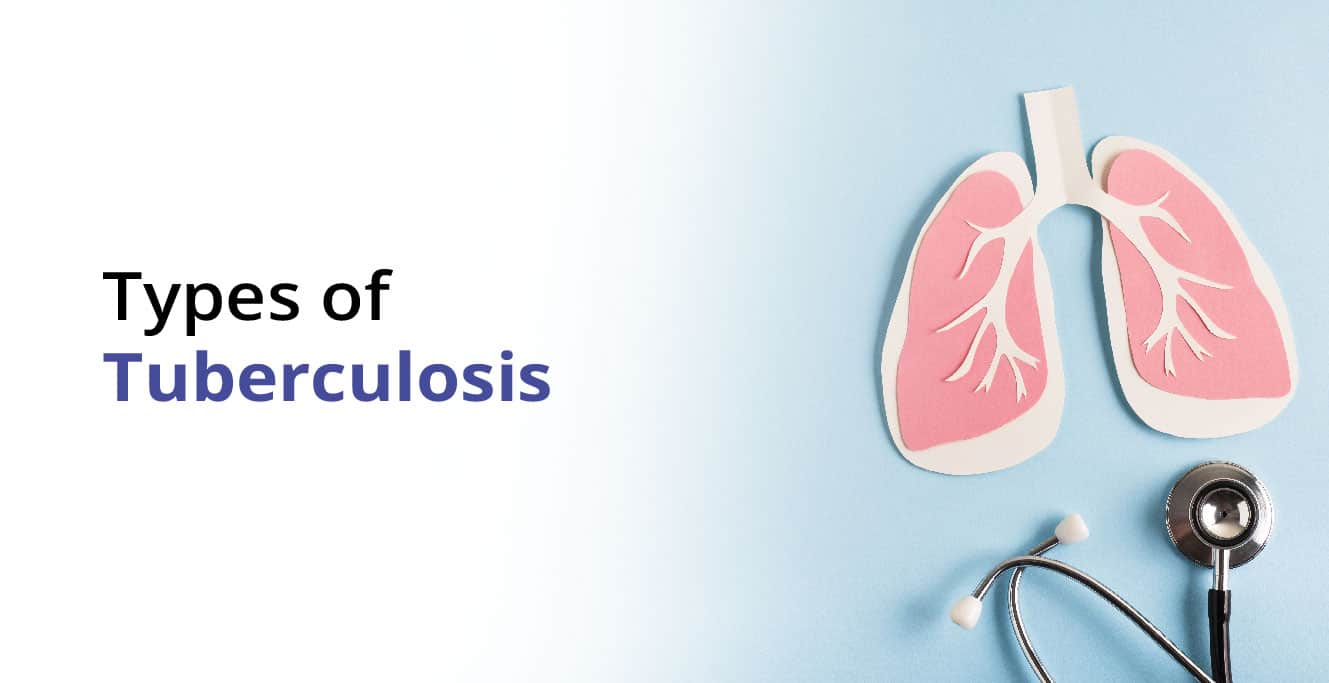
Tuberculosis: Causes, Symptoms, Treatment & Prevention

Table of Contents
Tuberculosis (TB) is a deadly disease that has plagued humanity for centuries. After COVID, it is the second most contagious infection in the world. Unlike coronavirus, however, TB is caused by a bacterium.
Tuberculosis killed 1.5 million people worldwide in 2020 and continues to be a serious health risk for humanity. Its prevalence in developing nations like India is well known. Research indicates that around 2.7 million people in India have TB.
This article thus sheds light on what is tuberculosis, what causes it, its symptoms, and its treatments.
What is tuberculosis?
The bacterium Mycobacterium tuberculosis is what causes TB. It usually attacks the lungs (a condition called pulmonary TB) but can also affect other body parts, such as the brain or the kidneys.
Tuberculosis is a serious, contagious disease that can be fatal if left untreated.
How does it spread?
The tuberculosis bacteria is spread through the air when an infected person coughs, speaks, sings, laughs, or sneezes. While doing so, they may release tiny droplets of saliva, mucus, or sputum that can contain M. tuberculosis bacteria.
Sputum is a thick mucus produced in your respiratory tract. When another person inhales these droplets, they might become infected with TB.
Types of tuberculosis
Tuberculosis, though contagious, does not spread so easily. You have to be in contact with an infected person for a considerable amount of time before you catch the bacterial infection yourself.
This is why TB is usually spread between family members or coworkers. Even if the tuberculosis bacteria enters your system, you won’t necessarily get sick. Your body tries to fight off the infection and, most of the time, destroys it.
In many people, their immune system is able to stop the bacteria from growing even if it doesn’t kill them. Therefore, the bacteria stays dormant in such people. Based on this prognosis, tuberculosis can be divided into two types.
- Latent tuberculosis: If the infection remains dormant, a person could have latent tuberculosis for many years without any symptoms and never get sick. However, if any other condition, such as HIV infection, weakens their immune system, latent TB can progress to active TB.
- Tuberculosis disease (active tuberculosis): Not every person can fight off the tuberculosis bacteria during the initial infection, especially people with low immunity, children, and senior citizens. In such cases, the bacteria starts to spread inside the body and progresses to become active tuberculosis.
Here’s a quick comparison of the two types:
| A person with Latent TB | A person with Active TB |
| has no symptoms | shows many tuberculosis symptoms, including pain in the chest, fever, chills, coughing up blood, weight loss, night sweats, and persistent cough |
| does not feel sick | usually feels sick |
| is not contagious and thus cannot spread the disease | can spread the bacteria to other people |
| requires treatment to prevent TB disease | requires treatment to treat TB disease |
| can be detected by a blood test or skin test | can be detected by a blood test or skin test |
| shows a negative sputum smear and normal chest x-ray | shows a positive sputum smear and abnormal chest x-ray |
Extrapulmonary tuberculosis and symptoms
In extrapulmonary TB, the bacteria attack other organs outside of the lungs.
The table below summarizes the various types of extrapulmonary TB and its symptoms:
| Types of Extrapulmonary TB | Symptoms |
| TB lymphadenitis occurs in lymph nodes | Fever, night sweats, unexplained weight loss, fatigue |
| Skeletal TB occurs in bones, including joints and the spine | Severe back pain, bone deformities, swelling, stiffness |
| Miliary TB spreads through the entire body, affecting multiple organs (heart, bones, brain) | Symptoms depend on which body part is affected. For instance, a person may experience a rash if their bone marrow is affected |
| Genitourinary TB affects the urinary tract, genitals, and predominantly kidneys | Testicular swelling, pelvic pain, back pain, painful urination, decreased urine flow, infertility |
| Liver TB, also known as hepatic TB, affects the liver | Liver enlargement, jaundice, upper abdominal pain, high-grade fever |
| TB meningitis spreads to the spinal cord and brain | Severe headaches, neck stiffness, sensitivity to light, nausea and vomiting, low-grade fever, loss of appetite, fatigue, and pain |
| TB peritonitis affects the abdomen | Loss of appetite, vomiting, nausea |
| TB pericarditis spreads to the pericardium, which is a tissue that surrounds the heart | Chest pain, shortness of breath, cough, palpitations, fever |
| Cutaneous TB attacks the skin | Sores or lesions on the skin |
The most common extrapulmonary tuberculosis is TB lymphadenitis, and the rarest is cutaneous TB.
Diagnosis of tuberculosis
Listed below are the four primary methods of TB diagnosis:
- Skin test: A doctor injects a protein into your skin (forearm), and if after 2-3 days, the injection site shows a welt (red, swollen mark on flesh) 5 millimetres (mm) or above in size, the result is considered positive. This test indicates that you have the TB bacteria but not whether it’s active and spreading.
- Blood test: To confirm the presence of TB bacteria in your system, a blood test will also be likely recommended.
- Chest X-Ray: Sometimes, both skin and blood tests can give false results, which is why doctors rely on chest X-rays to identify small lung spots.
- Sputum test: If your tests come out positive, your doctor will also order a sputum test to determine if you are contagious.
Tuberculosis treatment
Doctors prescribe antibiotics to treat TB. For latent TB, the treatment generally lasts three to nine months. The tuberculosis disease might take six to 12 months to completely go away.
The key to a successful tuberculosis treatment is to take your medicines as prescribed by your doctor and complete the course. Should you fail to do so, the bacteria may become resistant to certain TB medicines. Apart from that, extrapulmonary TB infections may require different treatments.
For instance, if genitourinary TB has caused infertility, you may need to seek options like in vitro fertilization (IVF) to become a parent after you are free from TB. The IVF technique allows the fertilization of the egg outside of the womb.
Conclusion
Tuberculosis, if not treated in time, can be deadly. If you have been exposed to an infected person or work in a setting where the infection is likely (such as a hospital), seek help immediately.
To get the best diagnosis and treatment for tuberculosis-induced infertility, visit Birla Fertility & IVF or book an appointment with Dr Shilpa Singhal.
FAQs:
1. What are the five causes of tuberculosis?
There are many tuberculosis causes, but the five most common are a)contact with infected people, b) living in an environment with a lot of air pollution, c) living in a household with someone who has tuberculosis, d) an impaired immune system, and e) a genetic predisposition to the disease.
2. What causes tuberculosis?
Tuberculosis is caused by Mycobacterium tuberculosis. It primarily spreads through the air or bodily fluids.
3. What happens if you get tuberculosis?
As the bacteria that causes TB grows, it can spread to other parts of the body. This can lead to other symptoms, such as coughing up blood, chest pain, weight loss, and fever. Untreated TB can be fatal.
Our Fertility Specialists
Related Blogs
To know more
Birla Fertility & IVF aims at transforming the future of fertility globally, through outstanding clinical outcomes, research, innovation and compassionate care.
Had an IVF Failure?
Talk to our fertility experts

 Our Centers
Our Centers











